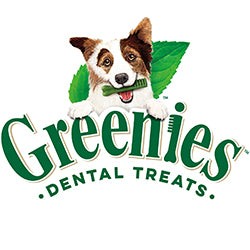Understanding Pet Insurance and How it Works
Understanding Pet Insurance and How it Works
The concept of pet insurance, like most types of insurance, may initially seem complex or perplexing. However, understanding pet insurance and how it works is crucial for any pet parent who wants to provide the best care for their beloved companion.
What is Pet Insurance?
Insurance for pets is a type of health insurance for your pet that reimburses you for certain medical expenses. This protects you against the risk of paying high or unexpected veterinary costs. These policies typically incur a monthly cost but can pay out for a multitude of veterinary treatments.
Why Do You Need Pet Insurance?
Veterinary care has made significant advances over the past few decades. There are now treatments available for pets that were unthinkable only a few years ago. However, along with these advancements comes an increase in the cost of veterinary care. High-end treatments, such as chemotherapy or surgical procedures, can cost thousands of dollars. Without pet insurance, pet owners are often faced with two choices: incur high costs or decline treatment for their pets.
Pet insurance allows you to focus on what's best for your pet without worrying about the economic implication. When your pet is insured, you can seek veterinary care without the fear of high medical bills.
Types of Pet Insurance Policies
There main types of pet insurance policies: accident only, accident and illness, and comprehensive.
- Accident Only: These policies provide coverage for injuries due to accidents like fractures, burns, or ingestion of foreign objects. They are typically the cheapest option but do not cover illnesses.
- Accident and Illness: This policy covers both injuries due to accidents and illnesses ranging from cancer and diabetes to respiratory infections. This is a common type of pet insurance.
- Comprehensive: This policy provides the most extensive coverage, including accidents, illnesses, preventive care like vaccinations, and wellness services such as annual exams and dental cleanings.
How Does Pet Insurance Work?
The first step in understanding how pet insurance works is to understand that, unlike human health insurance, pet insurance usually operates on a reimbursement model. This means that you pre pay for the vet and then submit a claim to the insurance company for reimbursement.
When you make a claim, you need to make claim form provided by the insurance company. This form usually requires details about your pet, the treatment received, and an itemized invoice from the veterinarian. After submitting the claim, you will receive reimbursement according to the terms of your policy. The amount reimbursed depends on the coverage percentage specified in your policy, typically 70%-90%, and any deductibles.
You can also have a deductible that are the money you have to pay before the pet insurance starts to pay. They can be either per incident or annual. A per incident deductible means you have to pay the deductible amount each time a new condition is treated, while an annual deductible is a set amount you have to pay each policy year, regardless of the number of incidents.
Factors Influencing Pet Insurance Cost
Pet insurance premiums vary based on several factors:
- Breed: Some breeds are more prone to certain health conditions than others and hence have higher premiums.
- Age: Much older pets are more likely to get ill and therefore cost more to insure.
- Location: The cost of a vet care varies by region, and this is reflected in the cost of pet insurance.
- Policy Type: More extensive coverage will generally cost more.
Is Pet Insurance Worth It?
This is a personal decision and depends on various factors, including the pet's age and health status, the cost of veterinary care in your area, and your financial situation. If you are unlikely to be able to afford high vet bills, then pet insurance might be a good choice
for you. On the other hand, if you can comfortably afford unexpected veterinary costs, you might prefer to pay out of pocket.
It's also worth considering the peace of mind that pet insurance can bring. Knowing that you can afford to give your pet the best care available without worrying about the cost can be a significant relief.
Things to Consider When Choosing a Pet Insurance Policy
When evaluating pet insurance policies, it's important to compare the coverage, exclusions, limits, and costs. Some policies may exclude certain conditions, particularly pre-existing conditions. Be sure to read the policy details carefully and understand what is and isn't covered.
The policy limits are also crucial. Some policies have annual, per-incident, or lifetime limits on how much they will pay. If the limits are too low, you could still end up with substantial out-of-pocket costs.
Also, consider the cost of the deductible and the reimbursement level. A higher deductible will mean lower premiums, but you'll pay more out of pocket when you make a claim. Similarly, a lower reimbursement level will reduce the premium but increase your share of any vet bills.
How to Get Pet Insurance
The process of getting pet insurance is relatively straightforward:
- Shop around: Look at several different insurance companies and policies. Get quotes and compare the coverage and cost.
- Choose a policy: Select the policy that offers the best combination of coverage and cost for your situation.
- Apply: Fill out the application form. This will usually require information about your pet, such as their breed, age, and health history.
- Wait for approval: The insurance company will review your application and decide whether to offer coverage. They may request additional information, such as vet records.
- Start your coverage: Once your application is approved, you can start your coverage. You'll need to pay the first premium, and then your pet will be insured.
Pets are family members. As responsible pet parents, we want to provide the best care for our beloved companions. Pet insurance can help make that care more affordable, protecting you from high veterinary costs while giving you peace of mind.
Remember to do your due diligence when choosing an insurance policy. Always compare the costs, understand the coverage, be aware of the limitations, and read the terms and conditions before deciding on the best pet insurance for your furry friend. Pet insurance is not a one-size-fits-all solution, and what works for one pet or pet owner might not work for another. Your goal is to ensure that your pet has the best possible care and protection.
- Choosing a selection results in a full page refresh.












